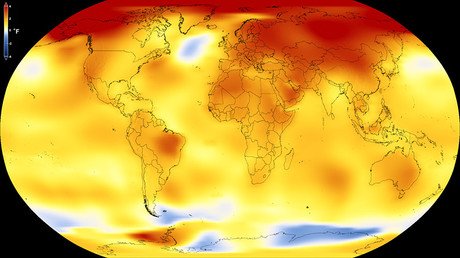Sahara desert is 10 percent bigger than 100 years ago
Climate change is partly to blame for a startling increase in the size of the Sahara Desert over the past one hundred years. According to a new study, the world’s largest desert has expanded by 10 percent since 1920.
READ MORE: Countdown to Day Zero: Why is Cape Town running out of water? (VIDEOS)
Researchers from the University of Maryland studied rainfall data to measure boundary changes of the desert and found that higher summer temperatures coupled with dry winters are increasing the overall aridity of the land. The expansion of the desert also spells trouble for humans and ecosystems in the Sahel, the transition zone between the desert and the lush green lands of the Savannah to the south.
"The trends in Africa of hot summers getting hotter and rainy seasons drying out are linked with factors that include increasing greenhouse gases and aerosols in the atmosphere," said Ming Cai, program director at the National Science Foundation, the group that funded the study. "These trends have a devastating effect on the lives of African people.”
#Sahara’s red sands covered by #snowhttps://t.co/rwq7G5Lldypic.twitter.com/rJfX6pmQUG
— RT (@RT_com) January 9, 2018
In the study, published in the Journal of Climate, researchers found that the Sahara underwent its most significant expansion during summer, enlarging by an astonishing 16 percent before contracting during the winter months. Scientists believe the responsibility for this is split between factors related to climate change and natural climate cycles, with the latter thought to account for more than 65 percent of the overall expansion since 1920.
"Many previous studies have documented trends in rainfall in the Sahara and Sahel, but our study is unique in that we use these trends to infer changes in the desert expanse on a century timescale," said the study’s lead author Natalie Thomas.
READ MORE: Countdown to disaster: Doomsday Clock now 2 minutes to midnight
Concerns for the human and wildlife populations in the Sahel are growing in light of the findings. Reduced rainfall in the region is seen most prominently at Lake Chad, the body of water at the center of the transition zone, which is currently drying out.
The team hopes the research can be used to study other deserts around the world. "We've already started looking at seasonal temperature trends over North America, for example,” Thomas said. “Here, winters are getting warmer but summers are about the same. In Africa, it's the opposite – winters are holding steady but summers are getting warmer.”
Think your friends would be interested? Share this story!














